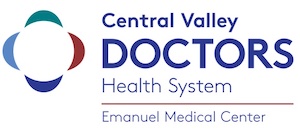What Is the Purpose of a Mammogram?
A mammogram is an X-ray image of the breast, which doctors use to look for early signs of breast cancer and other breast abnormalities. The imaging method is called mammography. It is used as both a diagnostic and screening tool.
What Happens During a Mammogram?
During a mammogram, a patient stands in front of a special medical X-ray machine while a technologist places the patient's breast on a flat plate. The breast is compressed with a parallel plate called a paddle, which holds it still while the X-ray is being taken. The process only takes a few seconds for each breast. This helps minimize blurring of the X-ray image that can be caused by movement. Compression also evens out the shape of the breast, so that the X-ray can travel a shorter path.
These steps are repeated for the other breast. For some women with breast implants or larger breasts, more images may be needed. The whole procedure generally takes about 20 minutes.
Your breasts may be more sensitive if you are about to have or currently having your period. Inform the technologists at once if you feel any pain.
3D Mammography Services Offered
3D Mammography, also known as Tomosynthesis, is ideal for women with dense breasts because it gives radiologists a more detailed view of the breast tissue, helping to find smaller cancers earlier. The advanced technology also decreases the number of false positives. There is same day follow-up available if additional imaging is needed, which results also available that day.
What Age Should a Woman Get a Mammogram?
Mammogram guidelines are issued by various medical organizations. Please talk with your healthcare provider about the best screening guidelines for you. For more information, please review the chart below for women with average risk:
| Age to Start Mammography | Age to Stop Mammography | Mammography Interval | |
| American College of Radiology/Society of Breast Imaging | 40* | No age limit, tailor to individual health status | Annual |
| American Cancer Society | 45 option to start at age 40 | When life expectancy is less than 10 years |
Annual 45-54; Every 1 or 2 years 55+ |
| American College of Obstetricians and Gynecologists | Offer at 40, not later than 50 | Age 75, then shared decision making | Every 1 or 2 years |
| American Medical Association |
40 | Not Stated | Annual |
| American Society of Breast Surgeons |
40 | When life expectancy is less than 10 years | Annual |
| National Comprehensive Cancer Network | 40 | Upper age limit for screening is not yet established | Annual |
| U.S. Preventive Services Task Force |
50 | 74 years | Every 2 years |
* African American, Hispanic and Asian women have peak incidence of breast cancer in their 40s and should begin screening at least by age 40.
Insurances Accepted
We accept a variety of insurance plans. For questions about your coverage, please contact your insurance provider directly.Breast Cancer Quiz
When you visit the Ruby E. Bergman Women’s Diagnostic Center, you benefit from:
- State-of-the-art digital mammography equipment for breast cancer screenings
- Nurturing, compassionate staff
- Variety of services, including aspirations, ultrasound-guided core biopsies and pre-operative wire localizations
- Accredited mammography and breast ultrasound facility
Services:
- Bone Density
- 3D mammography / Tomosynthesis
- Breast ultrasound
- Digital diagnostic mammography
- Digital screening mammography
- PET/CT imaging
- Stereotactic-guided core breast biopsy
- Ultrasound-guided breast cyst aspiration
- Ultrasound-guided core breast biopsy and fine needle aspiration
- Wire localization procedure
Monday: 8 AM - 5 PM
Tuesday: 8 AM - 5 PM
Wednesday: 8 AM - 5 PM
Thursday: 8 AM - 5 PM
Friday: 8 AM - 5 PM
Saturday: Closed
Sunday: Closed


